The Featured Creatures collection provides in-depth profiles of insects, nematodes, arachnids and other organisms relevant to Florida. These profiles are intended for the use of interested laypersons with some knowledge of biology as well as academic audiences.
Distribution
This species was originally described from Cuba and is native to the West Indies. It also occurs in the United States: Delaware south to Florida, west to Indiana, Kansas and Texas, Wisconsin, Arizona, California, Hawaii. It is also present in Mexico and South America.
Description
Egg
Oval, three times longer than wide, with a small projection. It is clear and shiny, like a piece of glass. Size increases after the egg is laid. Larva hatches two days after oviposition by the adult.
Larva
When dissected from the host, the Cotesia larvae are soft-skinned and bear a "bubble"—a caudal vesicle—in the posterior region. If not submerged in water, the larva dries out shortly after being dissected. Larvae are located in the host's posterior end. The first instar larvae are only 0.06 mm (< 1/32 in) long, while mature (third instar) larvae are 5.5 mm (~3/16 in) long. When they emerge from the host, they are much more rugged and immediately begin spinning a tight silky cocoon.
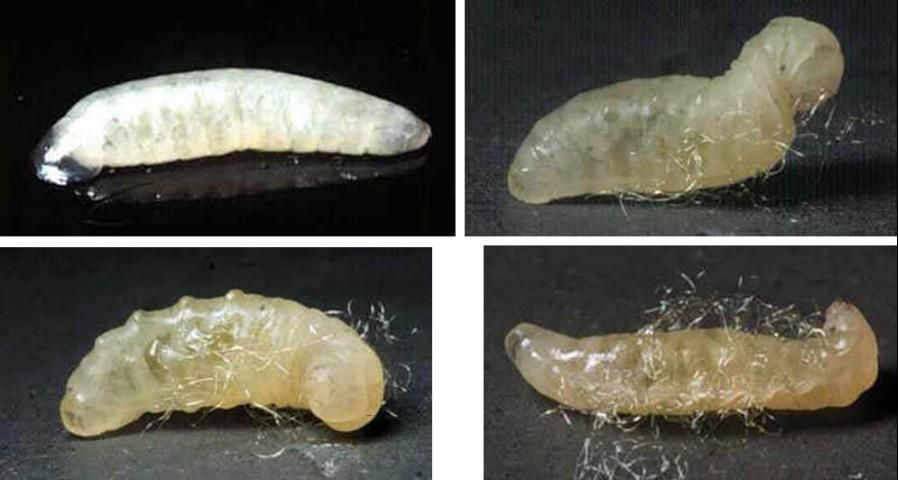
Credit: Andrei Sourakov, Florida Museum of Natural History
Pupa
The cocoon is white, tight and 4 mm (~1/8 in) long.
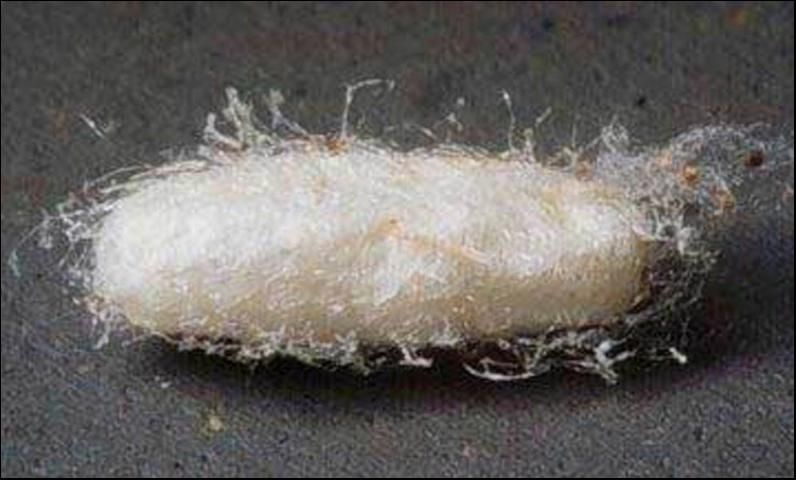
Credit: Andrei Sourakov, Florida Museum of Natural History
Adult
Cotesia marginiventris is a small insect (approximately 3 mm (1/8 in) in length). Females bear short ovipositors and parasitize only young larvae or even eggs. In the laboratory, Cotesia marginiventris lives more than a week, but it is most effective as a parasitoid between two and four days of age.
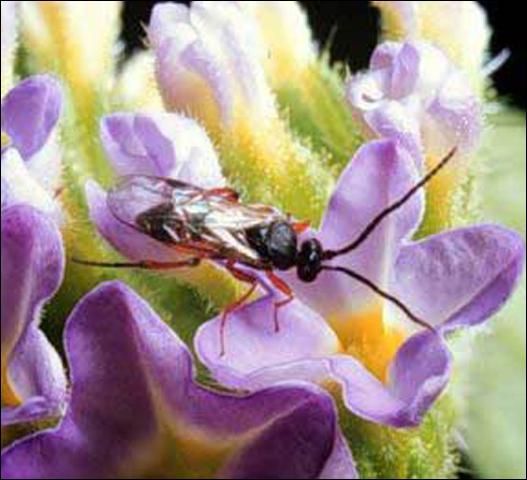
Credit: Andrei Sourakov, Florida Museum of Natural History

Credit: Andrei Sourakov, Florida Museum of Natural History
Life Cycle
Cotesia marginiventris is a general parasitoid of noctuid pests. In Florida, it is abundant throughout the summer, but its populations decline from October to April. At 25°C (77°F) it develops in 13 days from egg to adult.
Hosts
Cotesia marginiventris is a general parasitoid of noctuid moths. It attacks mostly very young larvae (first to second instar). A single egg is usually laid in each host, and the cocoon hatches in seven to 10 days. The host, which feeds little throughout its life, dies shortly after the parasitoid emerges. After the mature parasitoid exits the host larvae, they die within a day. The exit hole in the side of the larva is only a superficial sign of the actual damage that occurred to the host. Practically all organs inside were consumed by the parasitoid.
Cotesia marginiventris is a parasite of Agrotis ipsilon (Hufn.), the black cutworm; Anagrapha falcifera (Kirby), the celery looper; Autographa precationis (Gn.); Autoplusia egena (Guen.), the bean leafskeletonizer; Helicoverpa zea (Boddie), the bollworm (also called the corn earworm or tomato fruitworm); Heliothis virescens (F.), the tobacco budworm; Hymenia perspectalis (Hbn.), the spotted beet webworm; H. recurvalis (F.); Leucania latiuscula H.-S.; L. multisulca Wlkr.; Peridroma saucia (Hbn.), the variegated cutworm; Plathypena scabra (F.); Pseudaletia unipuncta (Haw.), the armyworm; Pseudoplusia includens (Wlkr.), the soybean looper; Scotorythra caryopsis Meyr.; Spodoptera eridania (Cram.), the southern armyworm, S. exigua (Hbn.), the beet armyworm; S. frugiperda (Smith), the fall armyworm; S. ornithogalli (Guen.); S. praefica (Grote); and Trichoplusia ni (Hbn.), the cabbage looper.
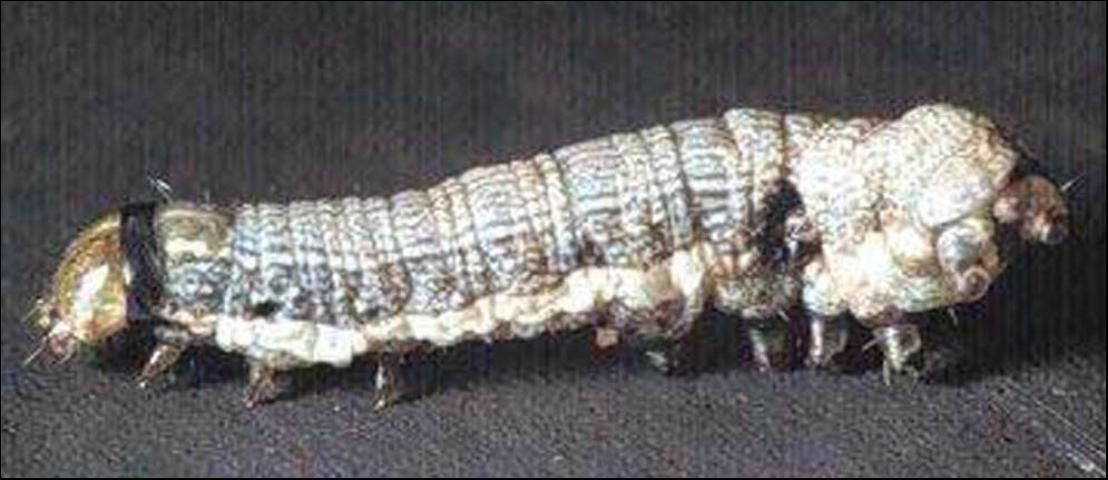
Credit: Andrei Sourakov, Florida Museum of Natural History
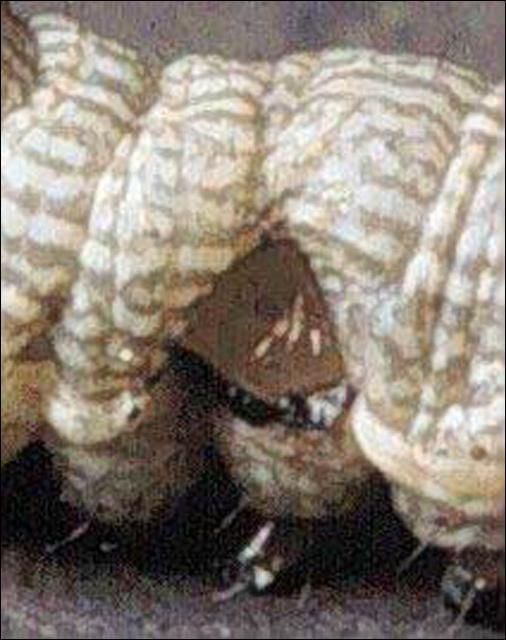
Credit: Andrei Sourakov, Florida Museum of Natural History
Importance
Considered for biological control of noctuid pests of vegetable crops, such as beet armyworm, cabbage looper, etc.
Selected References
Boling, J. C. and H. N. Pitre. 1970. Life history of Apanteles marginiventris with description of immature stages. J. of Kansas Entomol. Soc. 43: 465–470.
Jalali S. K., S. P. Singh, C. R. Ballal, and P. Kumar. 1990. Response of Cotesia marginiventris (Cresson) (Hymenoptera: Braconidae) to low temperature in relation to its biotic potential. Entomon 15: 217–220.
Grant J. F. and M. Shepard. 1984. Laboratory biology of Meteorus autographae (Hymenoptera: Braconidae), an indigenous parasitoid of soybean looper (Lepidoptera: Noctuidae) larvae. Environ. Entomol. 13: 838–842.
Kunnalaca S. and A. J. Mueller. 1979. A laboratory study of Apanteles marginiventris, a parasitoid of green cloverworm. Environ. Entomol. 8: 365–368.
Mitchell, A., et al. (February 2000). Stage by stage comparison of parasitoids important in biocontrol of cabbage pests. USDA. http://www.usda.ufl.edu/biocontrol/guide.htm (March 2000).
Rajapaske, R. H. S., V. H. Waddill, and T. R. Ashley 1992. Effects of host age, parasitoid age and temperature on interspecific competition between Chelonus insularis Gresson, Cotesia marginiventris Gresson, and Microplitis manilae Ashmead. Insect. Sc. Applic., 13: 87–94.